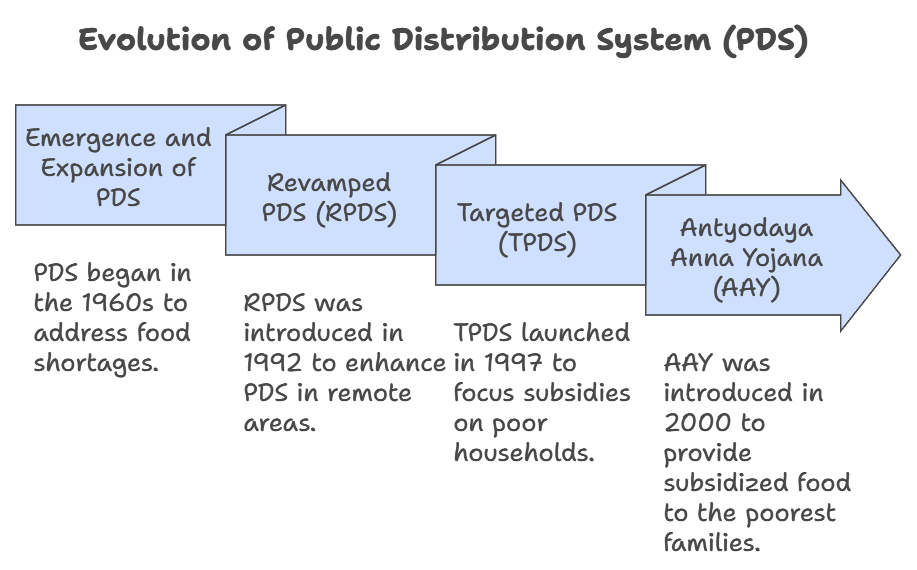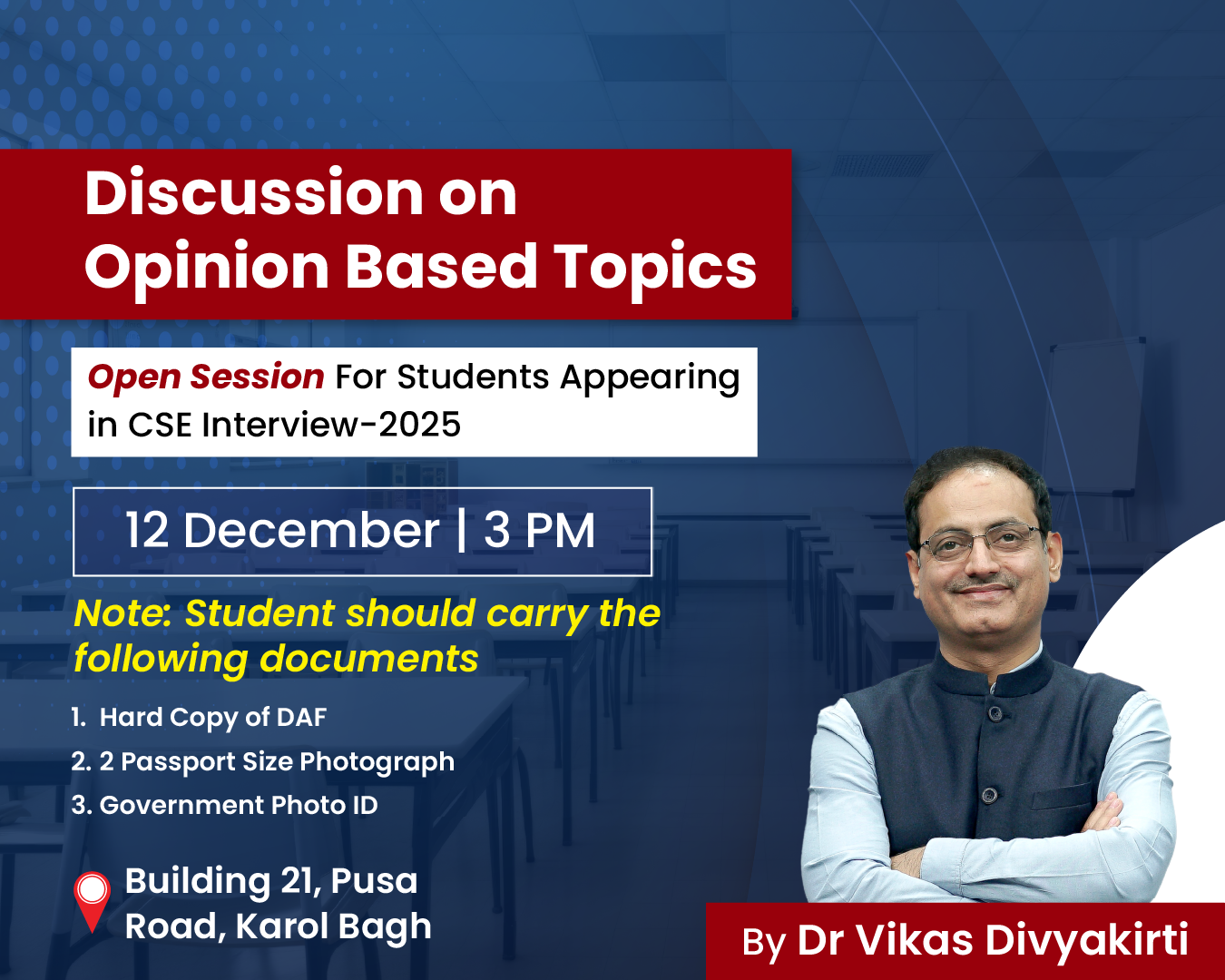-
15 Jul 2025
GS Paper 3
Economy
Day 26: ”A fair price loses meaning if fairness is lost in delivery.” Examine the key challenges in ensuring equity and efficiency in the Public Distribution System in India.(150 words)
Approach:
- Briefly introduce the Public Distribution System (PDS).
- Highlight the key challenges in ensuring equity and efficiency in the PDS.
- Conclude with a suitable way forward.
Introduction:
The Public Distribution System (PDS) is a key pillar of India’s food security framework, providing subsidised foodgrains through fair price shops. Under the National Food Security Act (NFSA), 2013, it covers nearly two-thirds of the population (based on Census 2011). However, its effectiveness depends not just on price fairness, but on the equitable and efficient delivery to the intended beneficiaries.
Body :
Challenges to Equity in PDS
- Exclusion Errors:
- Despite an extensive beneficiary base under the National Food Security Act (NFSA), 2013, many deserving households remain excluded.
- For instance, migrant labourers, nomadic tribes, and urban homeless often lack address-based documentation to access ration cards.
- NITI Aayog (2021) estimates ~10% exclusion of eligible households from PDS.
- Digital Divide and Aadhaar-linked Authentication:
- While digitisation was intended to reduce fraud, biometric failures under Aadhaar-based authentication have led to denial of food to genuine beneficiaries, particularly the elderly and disabled.
- Jharkhand case (2017): Reports of starvation deaths due to Aadhaar-PDS linkage failures highlighted severe delivery flaws.
- Gender and Social Disparities:
- Women-headed households and socially marginalised groups such as SCs and STs face barriers due to a lack of information, social stigma, and inaccessible distribution points.
Challenges to Efficiency in PDS
- Leakages and Diversions: One of the most persistent challenges in PDS is the diversion of foodgrains into the black market.
- The Household Consumption Expenditure Survey (HCES) 2022-23 reveals that approximately 28% of allocated grains, amounting to 19.69 million metric tonnes, fail to reach intended beneficiaries.
- Ghost Beneficiaries and Identity Fraud: Despite Aadhaar linkage efforts, the system continues to struggle with ghost beneficiaries and duplicate ration cards.
- For instance, Odisha had over 2 lakh ghost beneficiaries under the Public Distribution System, according to an RTI query in 2021.
- Quality Degradation and Storage Losses: Poor storage infrastructure leads to significant quality deterioration and quantity losses of foodgrains.
- Around 74 million tonnes of food is lost in India every year, which is 22% of foodgrain output or 10% of total foodgrain and horticulture production.
- Corruption in Fair Price Shops: Fair Price Shops(FPS) operators often engage in malpractices like under-weighing, overcharging, and maintaining irregular operating hours.
- Between 2018 and 2020, around 19,410 actions were taken by States/UTs, including suspensions, cancellations, show-cause notices, and FIRs against FPS licenses.
Government Measures and Innovations
- One Nation One Ration Card (ONORC): Ensures portability of food subsidies for migrant workers. As of 2023, it covers all 36 states/UTs and benefits over 80 crore people.
- Anna Chakra is a supply chain optimization tool for the PDS to reduce transport distances by 15–50% and save Rs 250 crore annually.
- SCAN (System for Computerized Allocation and Notification) streamlines food subsidy claims through a unified, automated, rule-based portal.
- SMART-PDS Scheme (2023–2026) to upgrade technology in End-to-End Computerization and Integrated Management of PDS (ImPDS).
Conclusion:
The Shanta Kumar Committee (2015) recommended reducing NFSA coverage from 67% to 40% and promoting cash transfers over grain distribution. India must shift from a supply-driven to a demand-responsive and accountable PDS, ensuring no deserving citizen is excluded due to systemic barriers. Only when equity in access and efficiency in delivery are upheld can the goal of food justice be truly realised.






